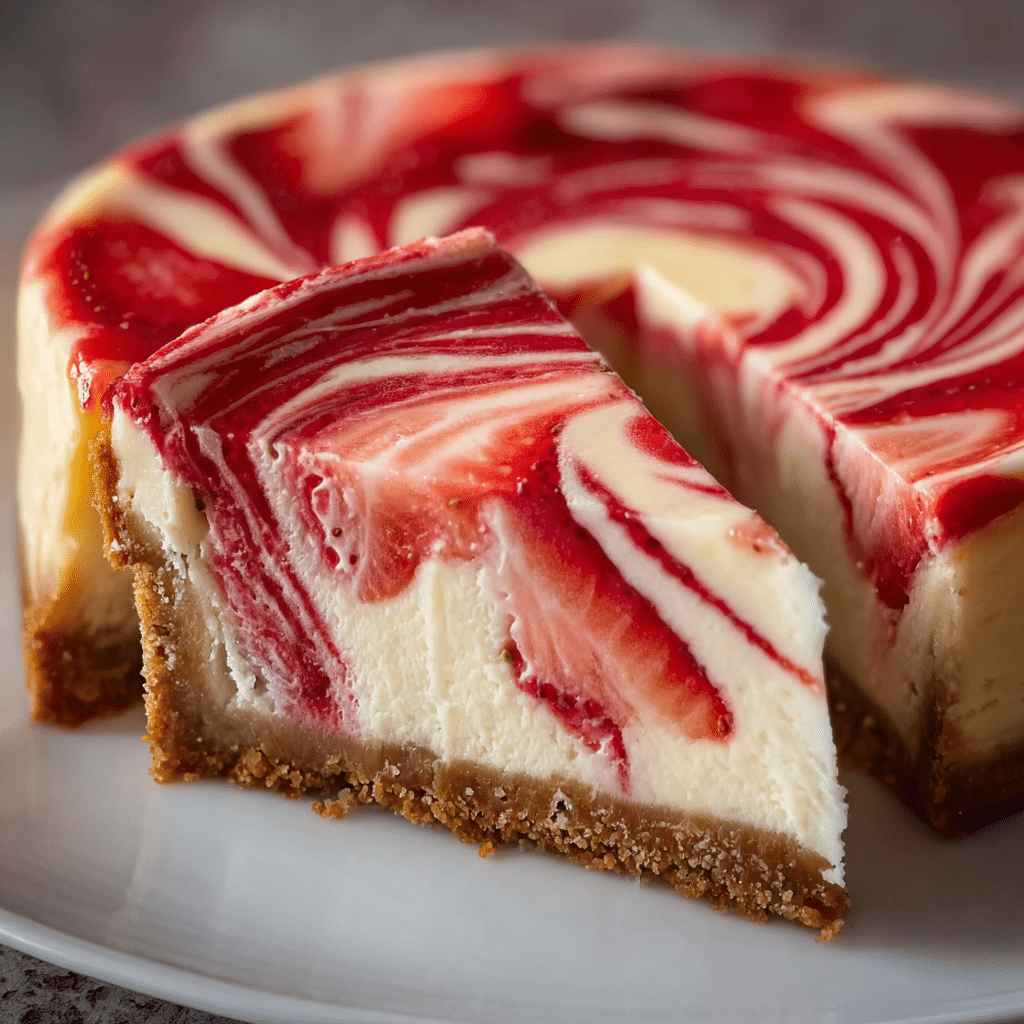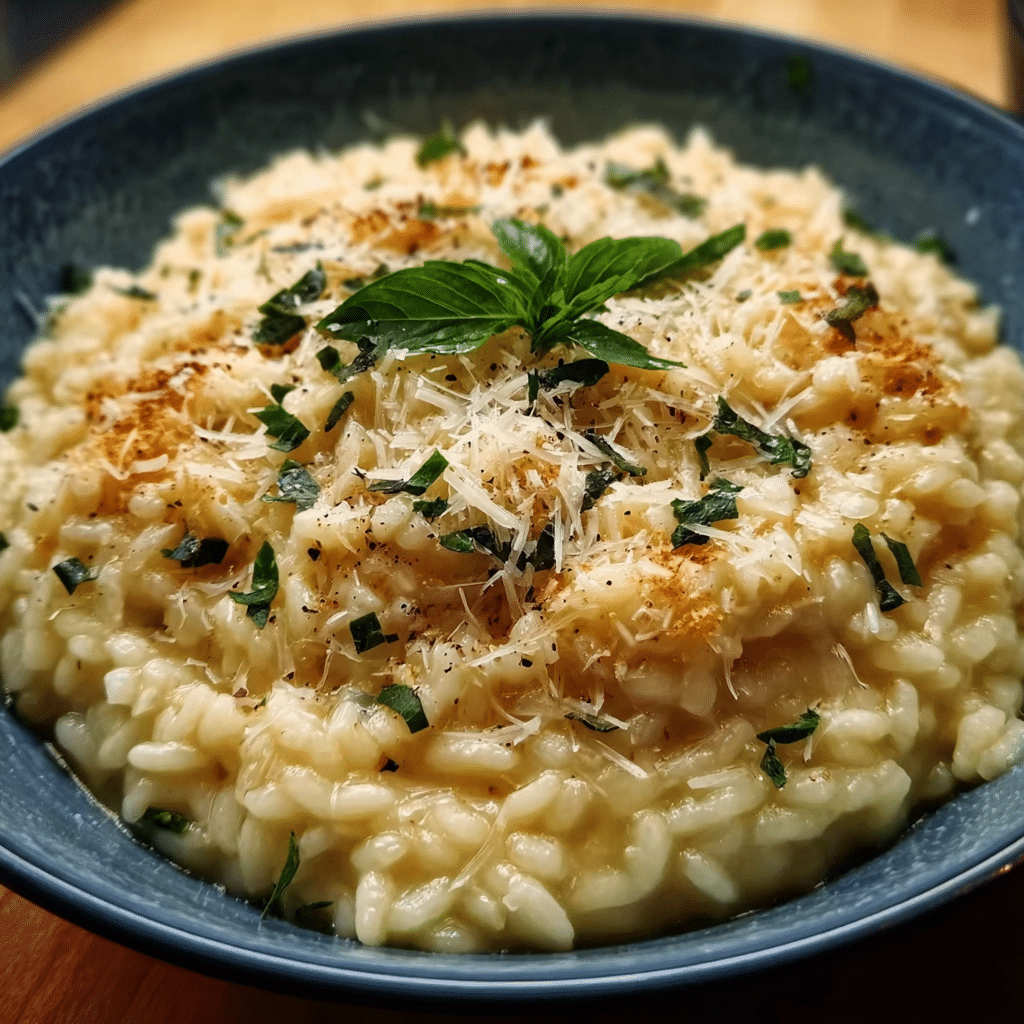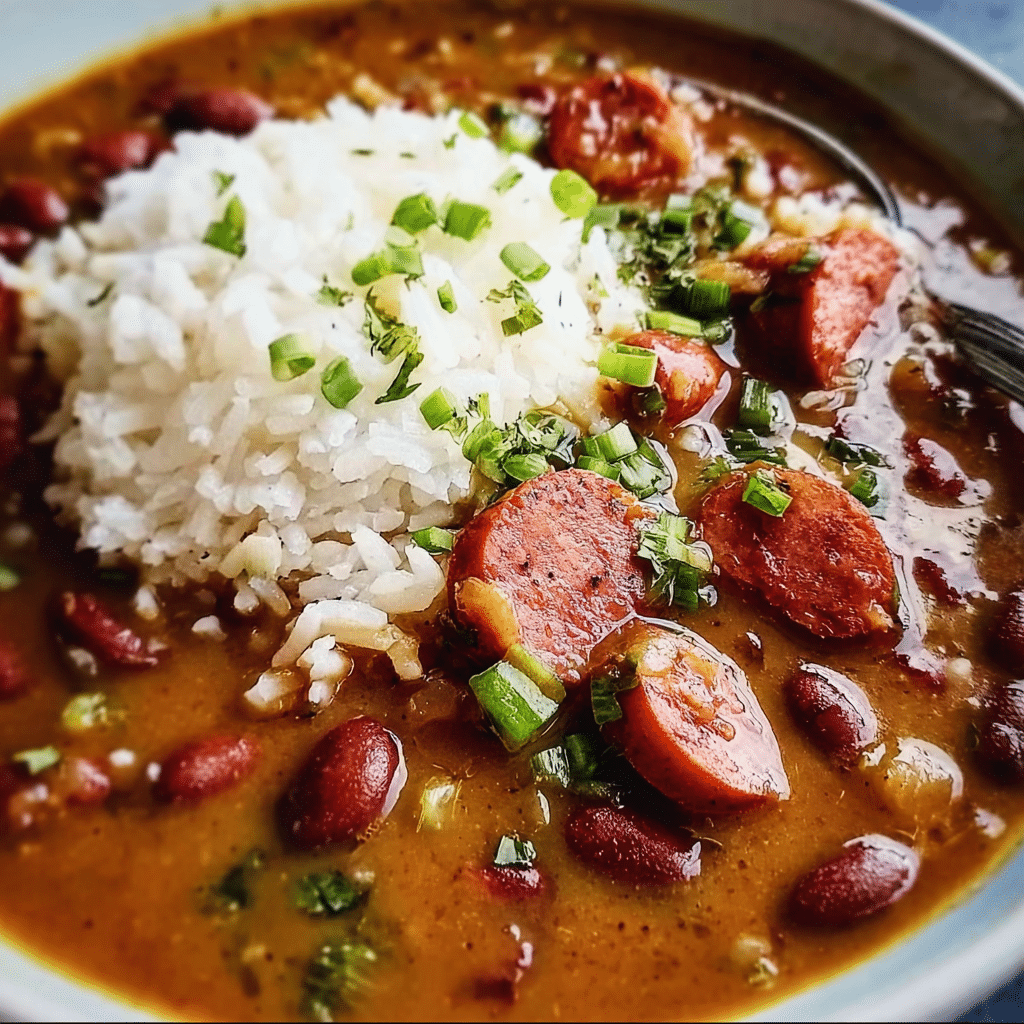Slow cooker beef has a special place in many hearts, including mine. I remember the first time I discovered this recipe. It was a chilly Sunday afternoon, and after a long week of work and responsibilities, I craved something comforting and hearty. I wandered into my kitchen, armed with nothing but a few simple ingredients and my trusty slow cooker. As the rich aroma of the beef simmering with spices filled my home, I felt an immediate sense of warmth and nostalgia. That day, I knew I had stumbled upon a dish that would become a staple in my household.
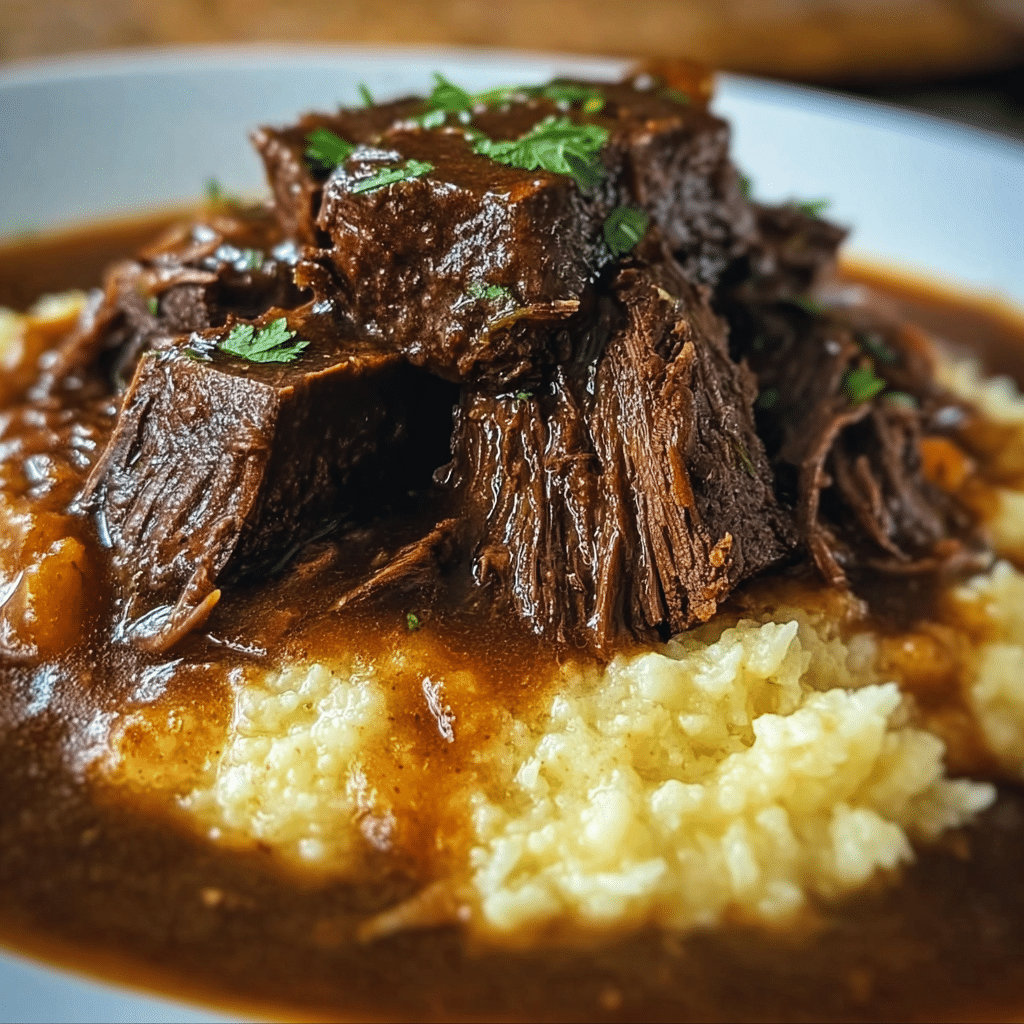
The beauty of slow cooker beef lies not just in its simplicity but in the way it brings people together. As the years went by, I began experimenting with different cuts of beef and various seasonings, each time crafting a version that felt uniquely mine. It became a family tradition to gather around the dinner table on busy weeknights, sharing stories and laughter over a steaming bowl of this delicious dish. Not only did it warm our bellies, but it also nourished our souls.
The Story Behind This Recipe
Diving deeper into the cultural background of slow cooker beef reveals a rich tapestry of flavors and traditions. The slow cooker itself has origins that date back to the 1940s, when busy homemakers sought convenient cooking solutions. The concept of slow cooking has been around for centuries, rooted in the idea of allowing flavors to meld and develop over time. In various cultures, similar cooking methods can be found, such as the French “coq au vin,” which involves slow braising meat in wine, or the Italian “ossobuco,” where veal shanks are cooked slowly with vegetables and broth.
As I learned more about the history of this dish, I began to appreciate how slow cooker beef transcends geographical boundaries. While my version is American through and through, inspired by the comfort food culture of the Midwest, I discovered that many countries have their own takes on slow-cooked beef, each with distinct spices and techniques that reflect their culinary heritage.
Why You’ll Love This Dish
What makes slow cooker beef particularly special is its versatility. Whether you’re looking for a satisfying meal on a busy weeknight or preparing for a cozy family gathering, this dish can adapt to any situation. The slow cooking process allows the meat to become incredibly tender, and the flavors deepen beautifully, making it a favorite among both kids and adults. With busy families in mind, this recipe is perfect for those who want a delicious home-cooked meal without spending hours in the kitchen. You can simply toss the ingredients into the slow cooker in the morning, and by dinnertime, you’ll have a savory dish that feels like a warm hug.
Seasonal relevance also plays a role in the appeal of slow cooker beef. During the fall and winter, when the air turns crisp, there’s nothing quite like coming home to the inviting scent of beef braising away. It becomes a comforting ritual, a way to celebrate the changing seasons while enjoying hearty meals that are perfect for chilly nights. It’s a dish that evokes feelings of warmth and togetherness, making it ideal for family gatherings, holiday celebrations, or simply a weeknight dinner.
As you read this guide, you’ll learn not only how to prepare slow cooker beef but also tips for customizing the recipe to suit your family’s tastes. You’ll find that it’s a forgiving dish that welcomes creativity, allowing you to add your favorite herbs, vegetables, and spices. Plus, I’ll share some personal anecdotes and variations that have become part of my cooking journey, making this dish even more meaningful. So, grab your slow cooker and let’s dive into the wonderful world of slow cooker beef together!
The Rich History and Cultural Significance of slow cooker beef
The rich history and cultural significance of slow cooker beef is a fascinating journey that takes us through time and across continents. This dish, while often associated with modern convenience, has roots that dig deep into the culinary traditions of various cultures. Slow cooking, in its essence, is about patience and respect for the ingredients, allowing them to reach their fullest potential as they blend flavors over time. The evolution of slow cooker beef reflects these principles, showcasing how a simple method can create extraordinary meals.
Origins and History
To fully appreciate slow cooker beef, we must first explore the origins of slow cooking itself. The practice of cooking meat slowly dates back to ancient civilizations. Early humans discovered that cooking meat over low heat could lead to tender, flavorful results. Various cultures have their own traditional methods of slow cooking, using techniques such as braising, stewing, and pot roasting. For instance, in the Middle East, tagines have been used for centuries to slow-cook meats with spices and vegetables, resulting in dishes that are rich in flavor and history.
In the United States, the slow cooker gained widespread popularity in the 1970s, thanks in part to the busy lifestyles of American families. The introduction of the countertop slow cooker, or crockpot, revolutionized home cooking, allowing families to prepare meals in advance. This made slow cooker beef a go-to recipe for many households, as it offered a way to enjoy a homemade meal without the hassle of extensive preparation at the end of a long day.
Cultural Significance
Slow cooker beef is more than just a meal; it’s a symbol of togetherness and comfort. In many cultures, sharing a meal is an essential part of social life. For instance, in the American Midwest, potlucks often feature slow-cooked dishes, allowing families to showcase their favorite recipes. Slow cooker beef, with its rich, hearty flavors, is a common centerpiece at these gatherings, fostering a sense of community and connection.
Furthermore, the dish is often associated with special occasions and holidays. In my family, slow cooker beef has become a staple for Sunday dinners, where we gather to share stories and enjoy each other’s company. The slow-cooked meat, paired with mashed potatoes or crusty bread, creates a comforting atmosphere that encourages conversation and bonding. It’s not just about the food; it’s about the memories created around the table.
Nutritional Benefits
Aside from its cultural significance, slow cooker beef also boasts nutritional benefits that make it a smart choice for families. Beef is a rich source of protein, iron, and essential vitamins and minerals. When cooked slowly, beef retains its nutrients and becomes more digestible. The addition of vegetables, herbs, and spices in slow cooker recipes not only enhances flavor but also boosts the nutritional profile of the dish. Carrots, onions, and garlic provide vitamins and antioxidants, making slow cooker beef a wholesome meal that nourishes both body and soul.
As the recipe has evolved, so too have the variations that cater to different dietary needs and preferences. Today, you can find slow cooker beef recipes that incorporate lean cuts, low-sodium broths, and plenty of vegetables, making it a flexible option for health-conscious families. Whether you’re looking for a classic beef stew or a spicy beef chili, the slow cooker can accommodate a wide range of flavors and ingredients, ensuring that everyone at the table can enjoy a delicious and nutritious meal.
In conclusion, the history and cultural significance of slow cooker beef are intertwined with the joy of cooking and sharing meals with loved ones. This dish embodies the essence of comfort food, bringing families together while offering a nutritious and satisfying option for busy lives. As we delve deeper into the world of slow cooker beef, you’ll discover not only how to make it but also how to infuse your own stories and traditions into this timeless recipe.
Essential Ingredients for Perfect slow cooker beef
When it comes to crafting the perfect slow cooker beef meal, the ingredients you choose are paramount to the dish’s overall flavor and texture. Each component plays a vital role in creating a hearty, satisfying meal that warms not just the stomach but the soul. Here, we will delve into the essential ingredients you need for a mouthwatering Slow Cooker Beef Manhattan, along with tips on how to select, store, and substitute these ingredients to fit your dietary needs.
Essential Ingredients
- Beef Chuck Roast (3-4 pounds): This cut is perfect for slow cooking due to its marbling, which melts during the cooking process, keeping the meat tender and flavorful.
- Beef Broth (2 cups): Adding beef broth enhances the flavor profile of the dish, infusing it with a rich, savory base. You can also use homemade broth for an extra layer of depth.
- Onions (2 medium, sliced): Onions add sweetness and depth; they caramelize beautifully in the slow cooker, adding a rich flavor.
- Garlic (4 cloves, minced): Garlic is a flavor powerhouse. When slow-cooked, its pungency mellows, contributing a warm, aromatic quality to the beef.
- Carrots (2 medium, chopped): Carrots provide sweetness and color to the dish; they also add a satisfying crunch when cooked.
- Celery (2 stalks, chopped): Celery adds a fresh, crisp texture and balances the sweetness of the carrots and onions.
- Bay Leaves (2): These aromatic leaves impart a subtle flavor that enhances the overall dish; remember to remove them before serving.
- Thyme (1 teaspoon, dried): Thyme complements beef beautifully, adding an earthy, herbaceous note that rounds out the flavors.
- Worcestershire Sauce (2 tablespoons): This sauce adds a complex umami flavor, enhancing the richness of the beef.
- Salt and Pepper (to taste): Essential for elevating all the flavors in the dish. Be mindful of the saltiness of your broth when seasoning.
Each of these ingredients plays a crucial role in the symphony of flavors that characterizes a well-made Slow Cooker Beef Manhattan. The beef chuck roast, for example, is renowned for its tenderness when cooked slowly, making it the ideal choice for this recipe. When selecting beef, look for a roast with a good amount of marbling, as this fat will render down during cooking, keeping the beef juicy and flavorful. The broth should be rich and flavorful—homemade is always best, but store-bought varieties can work if you choose high-quality options.
Print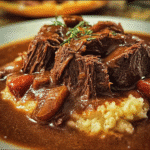
Slow Cooker Beef Manhattan Recipe
Ingredients
- 2 to 3 pounds beef chuck roast cut into large chunks
- 1 packet onion soup mix
- 1 packet brown gravy mix
- ¼ cup red wine vinegar
- 4 cups prepared mashed potatoes
- 6 to 8 slices prepared garlic toast
Instructions
-
Place the chuck roast pieces into a 4 quart slow cooker.
-
Sprinkle the onion soup mix and brown gravy mix over the roast. Pour the red wine vinegar over the top.
-
Cover and cook on low for 6 to 8 hours or on high for 4 hours.
-
Shred the beef with two forks.
-
To assemble: On a plate, place the toast. Add a layer of the mashed potatoes on the toast and top with the beef and au jus.
Shopping Tips
When shopping for your slow cooker beef ingredients, consider visiting local farmers’ markets or butcher shops for the freshest produce and meat. Not only will you often find better quality products, but you can also support local agriculture. Look for organic beef if possible; it tends to be more flavorful and is raised without antibiotics or hormones. Additionally, seasonal vegetables like carrots and celery will have the best flavor and nutritional value, so keep an eye out for what’s in season.
For storage, ensure that your beef is kept refrigerated and used before the expiration date. Vegetables should be stored in a cool, dark place or in the fridge, depending on their type. Carrots and celery will last longer in the fridge, while onions should be kept in a ventilated area. If you find yourself with excess ingredients, many of them can be frozen for later use, particularly the beef and broth. Just be sure to properly package them to avoid freezer burn.
Substitutions and Alternatives
Dietary restrictions can often pose challenges in the kitchen, but luckily, many ingredients in this recipe can be substituted without compromising the dish’s integrity. If you’re looking for a leaner cut of beef, consider using a brisket or even a round roast, though these may require a bit more attention to avoid drying out. For a vegetarian alternative, you can use portobello mushrooms or hearty beans, such as kidney or black beans, cooked in a similar style to create a satisfying meat-free meal.
If you are gluten-free, make sure to check that your Worcestershire sauce is gluten-free, or you can substitute with a homemade version using soy sauce, vinegar, and spices. For those following a low-sodium diet, opt for low-sodium broth and adjust the salt to taste. Remember to always taste as you go to ensure the best results!
In conclusion, understanding each ingredient’s role in your slow cooker beef dish is essential for achieving culinary success. With these insights and tips, you can confidently navigate the aisles and create a flavor-packed meal that will delight your taste buds and those of your dinner guests. Happy cooking!
Detailed Step-by-Step slow cooker beef Cooking Instructions
Creating a delicious Slow Cooker Beef Manhattan is a straightforward process that requires just a bit of preparation and patience. The magic of slow cooking lies in the way flavors meld and develop over time, resulting in a dish that is both comforting and satisfying. Below, we’ll walk you through detailed step-by-step instructions to ensure your slow cooker beef turns out perfectly every time.
Preparation Steps
- Gather Your Ingredients: Start by collecting all your ingredients. Having everything at hand makes the cooking process smoother and more enjoyable.
- Prep the Vegetables: Wash and chop your onions, carrots, and celery. I always find that chopping vegetables can be therapeutic; the rhythmic motion is almost meditative. Aim for uniform sizes to ensure even cooking.
- Season the Beef: Before you start cooking, season your beef chuck roast generously with salt and pepper on all sides. This step is crucial as it builds a flavor base right from the start.
- Brown the Beef (Optional): Although this step is optional, browning your beef in a hot skillet adds extra depth to the flavor. If you choose to do this, heat a tablespoon of oil in a skillet over medium-high heat and sear the roast on all sides until browned. This should take about 4-5 minutes per side. The caramelization adds a wonderful richness that slow cooking alone may not achieve.
Cooking Process
- Layer the Ingredients in the Slow Cooker: Begin by placing the chopped onions, carrots, and celery at the bottom of the slow cooker. These vegetables will act as a flavorful bed for the beef and help keep it elevated from the bottom.
- Add the Beef: Place your seasoned (and browned, if you opted for it) chuck roast on top of the vegetables. The beef will release juices during cooking, which will infuse the veggies with flavor.
- Pour in the Broth: Carefully add the beef broth to the slow cooker. This will form the base of your sauce, so use a good-quality broth for the best results.
- Add Aromatics: Sprinkle in your minced garlic, bay leaves, thyme, and Worcestershire sauce. These ingredients are essential for building the dish’s complex flavors.
- Set the Slow Cooker: Cover the slow cooker with its lid and set it to low for 8-10 hours or high for 4-5 hours. The longer, slower cooking method will yield the most tender and flavorful results. If you’re in a hurry, high works too, but keep an eye on the time.
- Check for Doneness: About 30 minutes before you plan to serve, check the beef for tenderness. It should be fork-tender and easily pull apart. If it’s not there yet, give it a little more time.
Final Assembly
- Remove Bay Leaves: Once the beef is tender, carefully remove the bay leaves from the slow cooker. They don’t add any flavor to the dish once cooked and can be a choking hazard if served.
- Shred the Beef: Use two forks to shred the beef right in the slow cooker. Mix it in with the vegetables and broth to create a cohesive dish. The beef should fall apart easily, indicating it’s perfectly cooked.
- Adjust Seasoning: Taste the broth and adjust seasoning as necessary. You might find you need a pinch more salt or pepper, depending on your preference.
- Serve: Ladle the beef and vegetables into bowls, ensuring each serving has plenty of that rich broth. You can serve it over toasted bread or mashed potatoes for a complete meal.
- Enjoy: Finally, sit back and enjoy the fruits of your labor! There’s something incredibly satisfying about serving a home-cooked meal that’s been nurtured in the slow cooker.
As you embark on this culinary journey, remember that patience is key. The beauty of slow cooker beef lies in the time it takes to transform simple ingredients into a comforting masterpiece. Don’t rush; instead, enjoy the process and the delightful aromas that will fill your kitchen. With the right techniques and a little love, your Slow Cooker Beef Manhattan will not only satisfy your hunger but may also become a cherished family recipe passed down through generations. Happy cooking!

Professional Tips and Techniques for slow cooker beef
When it comes to creating the perfect slow cooker beef dish, there’s more to it than simply tossing some ingredients into a pot and waiting for the magic to happen. As someone who has spent countless weekends experimenting with various slow cooker recipes, I’ve learned that a few professional tips and techniques can elevate your slow cooker beef from ordinary to extraordinary. Here’s a deep dive into the secrets that will make your slow cooker beef meal a family favorite.
Professional Techniques
One of the first things to consider when preparing slow cooker beef is the cut of meat. While you might be tempted to use a more expensive cut, such as ribeye or tenderloin, these can become overly soft and lose their texture when slow-cooked. Instead, opt for tougher cuts like chuck roast or brisket. These cuts contain more connective tissue and fat, which break down beautifully during the long cooking process, resulting in tender, flavorful beef.
Another critical element is browning your meat before adding it to the slow cooker. This step might feel unnecessary, but trust me; it’s essential! Searing the beef in a hot skillet creates a rich, caramelized crust that adds depth to your dish. I remember the first time I skipped this step—I was left with a dull flavor that no amount of seasoning could fix. Take the extra time to brown your beef; it’s worth it!
Layering is another technique that can significantly impact your slow cooker beef dish. Place heartier vegetables like carrots and potatoes at the bottom of the slow cooker, as they take longer to cook. The beef should sit on top, allowing the flavors to meld together beautifully. Additionally, be cautious with the amount of liquid you add. Slow cookers are designed to retain moisture, so you typically don’t need as much liquid as you might think. A cup of broth or even a beer can suffice, allowing the beef to absorb the flavors without becoming too soupy.
Troubleshooting Guide
Even the most experienced cooks encounter problems from time to time. If your slow cooker beef is too tough, it might not have cooked long enough, or you may have used a cut that requires longer cooking times. On the flip side, if your beef is mushy, it might have been cooked for too long or at too high of a temperature. Always refer to the specific cut of meat for guidance on cooking times and temperatures.
If you find your dish lacking flavor, try adjusting your seasonings. Salt, pepper, and herbs should be added at the beginning, but consider adding a splash of vinegar or citrus juice at the end of cooking to brighten the flavors. I once discovered that a touch of balsamic vinegar added complexity to my slow cooker beef, transforming a mediocre dish into something memorable.
For those of you who love to experiment, adding a splash of red wine or a few tablespoons of soy sauce can deepen the flavor profile. Just remember, a little goes a long way, so start with small amounts and taste as you go.
Presentation Tips
Slow cooker beef is often hearty and rustic, but that doesn’t mean it can’t be presented beautifully. Once your dish is ready, consider serving it over a bed of creamy mashed potatoes or fluffy rice. This not only enhances the meal but also adds an attractive contrast to the plate. Use fresh herbs like parsley or thyme as a final garnish; not only do they add a pop of color, but they also enhance the aroma of the dish.
When it comes to beverage pairings, a full-bodied red wine, such as Cabernet Sauvignon or Merlot, complements the richness of slow cooker beef exceptionally well. If you prefer beer, a stout or porter can also be a delightful match. I remember hosting a dinner party where I served my slow cooker beef with a robust red wine, and the combination was a hit. Guests were raving about the pairing, which added an elegant touch to a simple dish.
Lastly, consider meal prep strategies to make your cooking experience smoother. You can chop your vegetables and even brown your meat a day in advance, storing them in the fridge until you’re ready to cook. This makes weeknight dinners a breeze and ensures you have more time to enjoy the meal with your loved ones.
In conclusion, mastering the art of slow cooker beef involves a blend of professional techniques, troubleshooting skills, and a flair for presentation. With these tips in mind, you’ll be well on your way to creating a slow cooker beef dish that not only satisfies the taste buds but also warms the heart.
Creative Variations and Adaptations of slow cooker beef
While a classic slow cooker beef dish is undoubtedly delicious, the possibilities for variations and adaptations are endless. As someone who loves experimenting in the kitchen, I can’t wait to share with you a plethora of creative ways to spice up your slow cooker beef, ensuring it never gets boring at the dinner table. Let’s embark on this flavorful journey together!
Seasonal Variations
Cooking seasonally can enhance the flavors of your slow cooker beef dish. In the fall, consider incorporating root vegetables like parsnips and turnips, which add a sweet earthiness to the dish. Winter calls for heartier greens like kale or collard greens, which can be added during the last hour of cooking to retain their texture and vibrant color.
In spring, fresh herbs like basil and mint can lend a refreshing twist to your slow cooker beef. Imagine a slow-cooked beef with a hint of mint, served with a side of sautéed asparagus! During summer, you might want to lighten the dish by adding seasonal vegetables like zucchini or bell peppers. The idea is to embrace the flavors of the season—your taste buds will thank you!
Dietary Adaptations
One of the great things about slow cooker beef is its versatility. For those following a ketogenic diet, simply replace starchy vegetables with low-carb options like cauliflower or zucchini. You can also skip the potatoes entirely and serve the beef over a bed of leafy greens for a satisfying yet low-carb meal.
Vegan or plant-based eaters can still enjoy the essence of slow cooker beef by substituting the meat with hearty alternatives like jackfruit or mushrooms. Both can absorb flavors beautifully and provide a satisfying texture. I once made a jackfruit version that shocked my meat-loving friends—it was that good!
If gluten is a concern, ensure that any sauces or broths you use are gluten-free. Tamari can be an excellent substitute for soy sauce, allowing everyone to enjoy the dish without worry.
Creative Twists
For those who love to experiment with international flavors, why not take your slow cooker beef on a global adventure? For a Mexican twist, add chipotle peppers and serve the beef in tortillas with fresh salsa and avocado. Or, try an Asian-inspired version with soy sauce, ginger, and garlic, served over jasmine rice and garnished with green onions.
Leftovers are another fantastic opportunity for creativity. Transform your slow cooker beef into a savory shepherd’s pie by layering it with creamy mashed potatoes and baking it until golden and bubbly. Alternatively, shred the beef and toss it into a hearty soup with your favorite vegetables and broth for a comforting meal the next day.
Adjusting the spice level is another way to personalize your slow cooker beef. If you enjoy a little heat, add some crushed red pepper flakes or jalapeños. For a milder flavor, stick with fresh herbs and a sprinkle of black pepper. Remember, it’s all about tailoring the dish to suit your palate and those of your loved ones.
In conclusion, the world of slow cooker beef is vast and filled with opportunities for creativity. From seasonal ingredient swaps to dietary modifications and international flavors, there’s no reason your slow cooker beef dish should ever be the same twice. So roll up your sleeves, gather your ingredients, and let your imagination run wild in the kitchen!
Storage, Reheating, and Meal Prep for slow cooker beef
When it comes to creating a delicious slow cooker beef dish, one of the most common questions that arises is, “What do I do with the leftovers?” Whether you’re cooking for a crowd or simply want to have meals ready for busy weeknights, understanding how to properly store, reheat, and meal prep your slow cooker beef can make all the difference. Let me take you through the ins and outs of storage, ensuring that your slow cooker beef remains as flavorful and safe to eat as the day it was made.
Short-term Storage
After you’ve enjoyed a hearty serving of slow cooker beef, you may find yourself with a bounty of delicious leftovers. The best way to handle leftover slow cooker beef is to store it in airtight containers. Glass containers with tight-fitting lids are ideal, as they prevent moisture loss and help retain the dish’s rich flavors. If you’re using plastic containers, ensure they are BPA-free and designed for microwave use.
Before storing, allow the slow cooker beef to cool down to room temperature. This process can prevent condensation from forming inside the container, which can lead to sogginess. Once cooled, portion out the beef into smaller servings. This not only makes it easier to reheat but also helps with portion control. Aim for about 1 to 2 cups per serving, depending on your appetite and dietary needs.
Once your slow cooker beef is portioned, place it in the refrigerator. For best results, consume the leftovers within 3 to 4 days. Always label your containers with the date they were prepared to keep track of freshness. And remember, if any of your slow cooker beef dish has been sitting out for more than two hours, it’s best to discard it to avoid any foodborne illnesses.
Freezing and Long-term Storage
If you’re looking to extend the life of your slow cooker beef, freezing is a fantastic option. Freezing not only preserves its flavor and texture but also allows for quick meal options in the future. For freezing, follow the same cooling process as mentioned earlier, then place your portions in freezer-safe bags or containers. If using bags, try to remove as much air as possible before sealing to prevent freezer burn.
When it comes to portion sizes, consider freezing in single-serving sizes. This allows you to take out only what you need without having to thaw the entire batch, which can lead to quality loss. Properly stored, your slow cooker beef can last in the freezer for up to 3 months. However, for the best taste and texture, aim to consume it within the first month.
To make the most of your slow cooker beef when freezing, think about how you’ll use it later. You might want to freeze it with some of its cooking liquid to maintain moisture and flavor upon reheating. Additionally, consider labeling your bags with the date and contents to keep your freezer organized.
Reheating Best Practices
Once you’re ready to enjoy your stored slow cooker beef, reheating is key to maintaining its deliciousness. The best method for reheating is in the microwave or on the stovetop. If using a microwave, transfer your portion to a microwave-safe dish and cover it with a lid or microwave-safe wrap to retain moisture. Heat in short intervals, stirring in between, until it reaches an internal temperature of 165°F (75°C).
If you prefer reheating on the stovetop, place your beef in a skillet over medium heat and add a splash of broth or water to keep it moist. Stir frequently until heated through. This method not only warms your dish but also brings back some of the original flavor by allowing it to simmer slightly.
When it comes to food safety, always check the temperature of your reheated slow cooker beef. Use a food thermometer to ensure it’s at least 165°F to kill any potential bacteria. If you notice any off smells or unusual textures, it’s better to err on the side of caution and discard the dish.
Meal prep is another great way to utilize your slow cooker beef. Consider using it as a base for different meals throughout the week. You can pair it with rice, pasta, or serve it in tacos or sandwiches. This versatility not only saves time but also keeps your meals exciting. Just remember to store your ingredients separately if you’re meal prepping to maintain freshness and prevent sogginess.
In conclusion, proper storage and reheating of your slow cooker beef can significantly enhance your culinary experience. Whether you’re enjoying it fresh or saving it for later, following these guidelines will ensure that your delicious dish stays safe, flavorful, and ready to enjoy whenever you need it.

Nutritional Benefits and Health Information
As we dive into the world of slow cooker beef, it’s not just about the tantalizing aromas wafting from your kitchen but also about the nutritional benefits that come along with this hearty meal. Understanding the nutritional profile of slow cooker beef can help you make informed choices about incorporating it into your diet. So, let’s explore the health benefits, dietary considerations, and how this dish stacks up against similar meals.
Nutritional Profile
Slow cooker beef is typically made with cuts like chuck roast or brisket, which are rich in protein and essential nutrients. A standard serving of slow cooker beef (approximately 3 ounces) contains around 22 grams of protein, making it an excellent source for muscle repair and overall health.
In terms of calories, a serving generally ranges between 250 to 350 calories, depending on the cooking method and added ingredients. Alongside protein, these cuts of beef provide important vitamins and minerals, including iron, zinc, and B vitamins such as B12 and niacin. Iron is crucial for oxygen transport in the body, while zinc plays a vital role in immune function. B vitamins are essential for energy metabolism, making slow cooker beef a nourishing option for a balanced diet.
Health Benefits
The health benefits of slow cooker beef extend beyond just its nutrient content. The slow cooking process allows the beef to become tender and flavorful while retaining its moisture and nutrients. This method often requires less added fat since the natural fats in the beef render down during cooking, creating a rich sauce without needing excessive oils.
Additionally, when combined with vegetables—such as carrots, potatoes, and onions—slow cooker beef becomes a complete meal. These vegetables not only add layers of flavor but contribute dietary fiber, vitamins, and antioxidants. Fiber is essential for digestive health and can help you feel fuller for longer, making slow cooker beef a satisfying option for those looking to manage their weight.
Furthermore, slow cooking at low temperatures can help break down tough cuts of meat, making them easier to digest. This can be particularly beneficial for those who may have difficulty digesting lean cuts of meat.
Dietary Considerations
While slow cooker beef is a wholesome meal option, there are some dietary considerations to keep in mind. For those on low-carb diets, such as Keto or Atkins, slow cooker beef can be a fantastic main dish when paired with low-carb vegetables or served over cauliflower rice.
However, for individuals watching their saturated fat intake, it’s essential to choose leaner cuts of beef or trim visible fat before cooking. This can help reduce overall fat content while still providing a protein-packed meal. Additionally, consider the sodium content of any added seasonings or sauces. Opt for low-sodium broth or homemade spice blends to control your sodium intake.
For those with allergies, it’s crucial to check any added ingredients, especially sauces or marinades, which may contain allergens such as soy or gluten. Always read labels carefully or consider preparing your own sauces to ensure they align with your dietary needs.
As for those following a plant-based diet, there are plenty of creative ways to mimic the flavors and textures of slow cooker beef using plant-based proteins like lentils or jackfruit. These alternatives can be seasoned similarly to create a hearty, satisfying dish that retains the essence of the original while being plant-friendly.
In conclusion, slow cooker beef not only delights the taste buds but also packs a nutritional punch. With its rich protein content, essential vitamins, and the potential for a balanced meal when paired with vegetables, slow cooker beef can fit into various dietary plans. By making mindful choices regarding cut selection and accompanying ingredients, this dish can be a healthy, wholesome option for any dinner table.
Frequently Asked Questions About Slow Cooker Beef
What are some delicious hot beef recipes I can make in a slow cooker?
A popular hot beef recipe for the slow cooker is the classic beef stew. Start by browning chunks of beef in a skillet for added flavor before adding them to the slow cooker along with onions, carrots, potatoes, garlic, and beef broth. Season with herbs like thyme and rosemary for a fragrant touch. Allow it to cook on low for 6-8 hours for tender beef and rich flavors. For an extra twist, add a splash of red wine to the broth for depth.
Can you provide a simple roast beef commercial recipe for the slow cooker?
For a straightforward roast beef commercial recipe, begin by searing a 3-4 lb. chuck roast in a hot skillet to develop a crust. Transfer the roast to the slow cooker and surround it with sliced onions, carrots, and celery. Pour in a mix of beef broth and a packet of onion soup mix for convenience. Cook on low for 8-10 hours or until the beef is fork-tender. This method yields a savory, juicy roast perfect for sandwiches or served with mashed potatoes.
What is a good recipe for hot roast beef in a slow cooker?
A great hot roast beef recipe involves seasoning a beef roast with garlic powder, onion powder, salt, and pepper before placing it in the slow cooker. Add a cup of beef broth and a splash of Worcestershire sauce for additional flavor. Cook on low for 8-10 hours, and once done, shred the beef with two forks right in the pot. This shredded hot roast beef is perfect for serving on crusty rolls or over rice with a side of veggies.
How can I make a flavorful hot beef gravy to accompany my slow-cooked beef?
To create a rich hot beef gravy, start by removing the cooked beef from the slow cooker and setting it aside. Skim off any excess fat from the juices left in the pot. In a small bowl, whisk together equal parts cornstarch and cold water to create a slurry, then stir this into the warm juices while cooking on high for a few minutes until thickened. Season with additional salt and pepper to taste, and for extra flavor, consider adding a splash of soy sauce or a teaspoon of prepared mustard. Serve the gravy hot over your beef and sides for a comforting meal.

